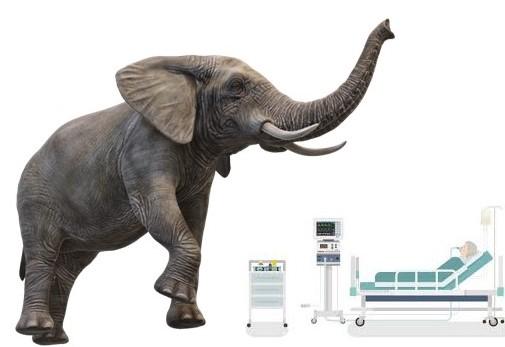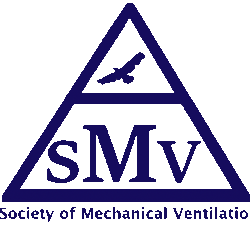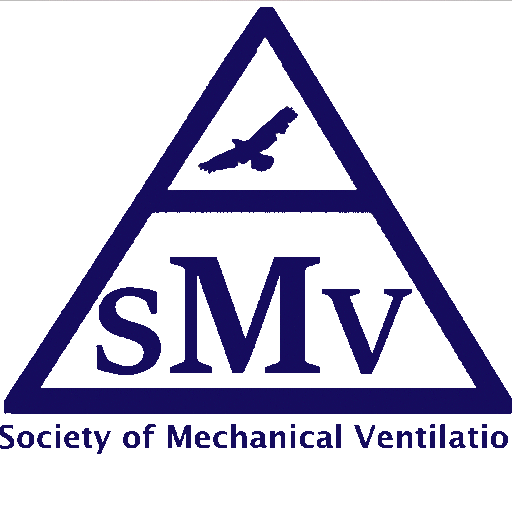
Those are traumas that happen after placing the patient on the ventilator and the only way to avoid them is to avoid mechanical ventilation which of course can’t always be done.
Those can cause worsening hypoxemia that can prolong mechanical ventilation, lead to multi-system organ dysfunction, and increase mortality.
So the best strategy is to try to avoid them, rapidly diagnose them, and correct what we can.
Our understanding of VILI have spiked over the last two decade. Since the positive results of the low vs high tidal volume trial in ARDS in the beginning of the century, most clinicians start to pay attention to low tidal volume and limiting plateau pressure but is that enough? Is that the answer?
So how are we doing with such understanding, any better? Unfortunately not too good, we can do better, need more work to be done, we owe it to our patients so let’s dig in this very complex problem.
What is VILI:
There are so many types and names we should all be familiar with (Volutrauma, Barotrauma, Biotrauma, Atelectrauma, Shear injury, Diaphragm myotrauma, Oxygen toxicity, SILI, Capillary endothelial injury, etc).
During mechanical ventilation, the lung is under continuous forces during inspiration and expiration, mainly: Stress, Strain, and the frequency of such forces. To be fair, those forces are not solely from the ventilator, but the patient himself play a big role.
Because of the marked heterogeneity of our lung units both in health and disease, different areas of the ventilated lungs are under different stresses (forces per unit area, represented by Trans-pulmonary pressure, i.e. the inside alveolar pressure minus the opposing outside pressure represented by pleural pressure), strain (the dynamic change in shape and deformation of the alveoli).
There has been a debate over the years of what is injurious to the lung, pressures, or volume. The answer is probably both and more. The Mechanical power equation sums the forces in one:
Mechanical Power = VE x (Peak Pressure + PEEP + F/6) / 20
However this equation lacks some important components: the patient-ventilator interaction, trans-pulmonary pressures, dead space, the ventilation distribution to different lung regions.
To summarize the forces we need to pay attention to minute ventilation, respiratory rate, Delta inspiratory pressures, PEEP, tidal volume, trans-pulmonary pressure, patient-ventilator asynchronies, FRC, dead space, and ventilation distribution.
Risks for VILI:
So who develops VILI? We know there are many risks for developing VILI and SILI (self-induced lung injury), but the true incidence and prevalence of VILI is unknown, majorly because of uncertainty in diagnosis.
The terms VALI (ventilator associated lung injury) or VAE (ventilator associated events) were developed based on worsening oxygenation and the need to increase FiO2 and PEEP because of the uncertainty in diagnosis and are very nonspecific and don’t solve the problem.
So why some patients develop VILI, and some don’t? Is it genetic phenotype? The answer is unknown similar analogy are why not all smokers develop COPD or lung cancer.
Diagnosis of VILI:
Unfortunately in clinical practice, it is very difficult to diagnose, with the exception of Barotrauma in the form of pneumothorax, pneumomediastinum which are easily diagnosed radiologically.
Clinical diagnosis remains the only available method and to rule out different other etiologies. Worsening oxygenation, new radiographic evidence of lung infiltrates and respiratory mechanics are usually attributed to infectious Ventilator Associated Pneumonia (VAP) or cardiogenic pulmonary edema leading to the wrong diagnosis, unnecessary antimicrobials and diuretics and most importantly not recognizing the true problem.
No labs or serological markers are currently available for everyday practice for early diagnosis of VILI. There are ample research using different biomarkers in animals, but they remain under investigation and limited to research labs.
Monitoring respiratory mechanics and waveforms can tell us early that there is a new problem but can’t diagnose if the new problem is VILI or just worsening of the initial etiology that landed the patient on the ventilator or other problems (TRALI, VAP, DAH, Pulmonary edema, etc)
What can we do at the bedside?
Obviously, we first need to prevent VILI. “Prevention is better than cure”
In addition to monitoring and minimizing all the factors included in the equation of mechanical power, there are additional steps that can be taken into consideration.
Monitoring the trans-pulmonary pressure is very important to avoid the excess stress on the alveolar unit both at inspiration and expiration.
Optimizing the PEEP is also crucial according to physiological parameters not based on oxygenation or a table with the one hat fits all concept. Taking in consideration that not one level of PEEP regardless high or low is optimal to all alveolar units in both lungs that have their own opening and closing pressures and under different trans-pulmonary pressures stress.
Optimize and prevent patient-ventilator desynchronies as much as possible, acknowledging the thin line between spontaneous breathing benefits and the possible benefits of muscle paralytics and diaphragmatic dysfunction.
Baby lung or open lung approach: another controversial topic but points to consider are the baby lung is a functional unit and is not anatomical and is not equivalent to 6 ml/kg IBW (which is the normal tidal volume of a healthy person and could be still excessive in lung injury). The open lung approach concentrates on increasing the FRC of the lung through recruitment, different ventilator modes but also carry the risk of excessive volumes and pressures.
Prone position is one of the simple maneuvers that improves the lung inhomogeneity, that improves oxygenations, outcomes and probably reduces VILI but is still underutilized in ARDS, however its use during the COVID-19 pandemic has markedly increased for intubated and non-intubated patients.
Technologies that monitor lung volumes, e.g. CT scans are available but carries the risk of radiation exposure and transporting unstable patients to radiology suits (though mobile units are available). Electrical Impedance Tomography (EIT) is a technology that can be used continuously at the bedside to monitor lung volumes and assess over and under distension in real time helping the clinicians adjust the volumes, pressures, and position of the patient.
Secondly, we need to improve our diagnosis and adjust our strategies of ventilation if VILI is occurring, otherwise we become “The blind leading the blind”
The deficit in diagnosis is a major obstacle. Education is absolute necessity, research on biomarkers of VIL is crucial (similar to troponins as a marker of myocardial injury, and lactic acid as a hypoperfusion marker in shock states). We need reliably sensitive and specific markers (serologic or based on breath analysis), fast, not too expensive so can be incorporated at the bedside.
The future:
With the advance in technology, education, research, artificial intelligence, I am extremely hopeful that we will do better eventually specifically in the topic of VILI and mechanical ventilation in general.
I can see alert systems all incorporated in one place probably within the ventilator that incorporates different measures and maybe analyze the expiratory gas from the patient recognizing early VILI and automatically correct the issues or gives suggestions to the bedside clinicians.
To summarize:
Personalized ventilation to each patient
Spend the time at bedside
More education and improve enthusiasm
More research
Uniting forces from all who have stake in mechanical ventilation (clinicians, societies, universities, manufacturers)
New technologies and artificial intelligence

